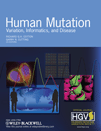Abstract
The Long QT Syndrome (LQTS) is a group of genetically heterogeneous disorders that predisposes young individuals to ventricular arrhythmias and sudden death. LQTS is mainly caused by mutations in genes encoding subunits of cardiac ion channels (KCNQ1, KCNH2, SCN5A, KCNE1, and KCNE2). Many other genes involved in LQTS have been described recently (KCNJ2, AKAP9, ANK2, CACNA1C, SCNA4B, SNTA1, and CAV3). We created an online database (http://www.genomed.org/LOVD/introduction.html) that provides information on variants in LQTS-associated genes. As of February 2010, the database contains 1738 unique variants in 12 genes. A total of 950 variants are considered pathogenic, 265 are possible pathogenic, 131 are unknown/unclassified, and 292 have no known pathogenicity. In addition to these mutations collected from published literature, we also submitted information on gene variants, including one possible novel pathogenic mutation in the KCNH2 splice site found in ten Chinese families with documented arrhythmias. The remote user is able to search the data and is encouraged to submit new mutations into the database. The LQTS database will become a powerful tool for both researchers and clinicians. © 2010 Wiley-Liss, Inc.




